
Week #5 Organized Home Challenge
Organize Recipes And Cookbooks
This week's challenge is to organize recipes and cookbooks in your home so they are easy to find, and serve their intended purpose of helping you cook food in your kitchen.
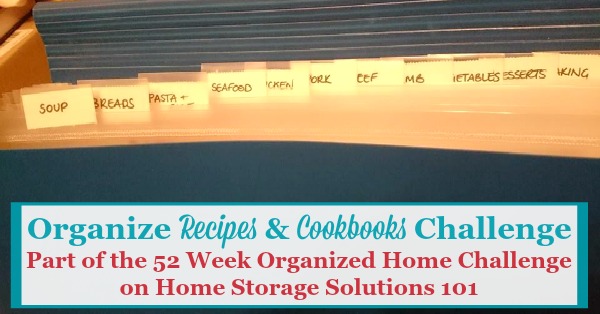
I know this challenge may seem overwhelming to some participants, and to others it will seem like a breeze. It really just depends how many cookbooks you've got, or how many loose recipes you've got piled up and "waiting" to be tried, and/or put into some organization scheme.
Whether this week's task takes a little or a lot of time for you though, the important goal for this week is to get a good recipe organizing system in place, and begin the process of organization. However, please know it will be a continuous process, as you cook new recipes and add to your repertoire.
Further, although you can get "crafty" with your organization method, and make pretty cards or binder systems (which we'll discuss more below) don't feel obligated to do so, at least this week. Instead, the goal is to create a functional, working system for your recipes, without worrying about the beauty of it.
Are you new here? The Organize Recipes and Cookbooks Challenge is part of the 52 Weeks To An Organized Home Challenge. (Click the link to learn how to join us for free for future and past challenges if you aren't already a regular reader).
Step 1: Consider Your Reasons For Saving Recipes And Cookbooks And Categorize Each Accordingly
When someone needs to consider the issue of how to organize recipes, it is generally because they have a lot of them to deal with.
So, the first step in this Organize Recipes and Cookbooks Challenge is to think about the reasons and motivations for saving recipes in the first place, and then categorize your recipes into one of the categories/reasons for saving it, listed below.
- Practical: Remembering how to cook the dishes you know your family loves
- Sentimental: Preserving family history with old recipes cards and family favorites passed down through the generations
- Aspirational: Wanting to try new things, to improve or expand your cooking skills, find an even better recipe for something you already make, etc.
- Fantasy: Fun dreaming about cool things you'll never try, but that looks completely awesome
To get the most functional use out of your recipes and create an organization system that works, you've got to think about what category every recipe and cookbook fit into. I believe it is toughest to distinguish between the aspirational and fantasy categories listed above.
However, having a heart to heart talk with yourself about which one it is can really help you with the next step in the process, decluttering and finding the right home in your home for each category of recipes.
Step 2: Declutter Your Recipes And Cookbooks And Find The Right Home For Each Category
The second step in the Organize Recipes and Cookbooks challenge is to get rid of recipes or cookbooks you won't use anymore, and make sure you're keeping your recipes in the right spots in your home.
Below are my general rules of thumb about each category of recipes, and what you should do with them:
Practical Category: Those Recipes You Know You And Your Family Like
The recipes and cookbooks you use on a regular basis, and that you've already succesfully cooked for your family before and they've enjoyed, should obviously not be decluttered or thrown away. Instead, these recipes should be readily accessible in your kitchen for you to reference as needed. (In Step 4 of the Organize Recipes Challenge below I've discussed how to organize recipes from this category.)
Sentimental Recipes Category: Family History And Traditions
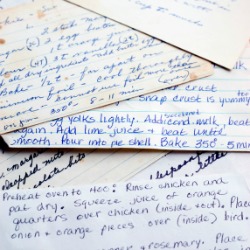
This next category of recipes, such as those ancient and revered old family recipe cards with your grandmother's handwriting on them, should actually not be in the kitchen at all. That is because they aren't for practical use typically, but instead are to preserve memories and family history.
In fact, the kitchen is actually not a very safe place for them. It can get hot and humid in there, and things in kitchens are prone to getting splattered and spilled on, and even kind of greasy. That is no place for delicate paper family heirlooms.
Instead, make time to place these items in a scrapbook or album, or otherwise have them available for everyone to enjoy and reminisce about in a more appropriate room in the house.
Further, if you actually still use one or more of these recipes make a photocopy of the page or otherwise transfer a copy of the recipe into the stack of practical recipes mentioned above, so you don't have to worry about ruining or harming the original while cooking.
Aspirational Recipes Category: Stuff You Want To Try Someday But Haven't Yet
This is where it gets tough in the decluttering process of the Organize Recipes Challenge, in my opinion. First you've got to decide if a recipe is something you really are going to try to make in the future, or not. If you really never will try it, but it is completely awesome then see my suggestions below for the fantasy recipe category.
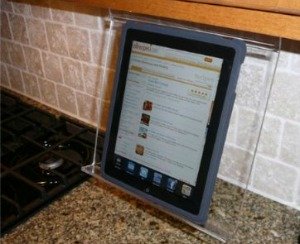 If you find recipes on the Internet use a Kitchen iPad
If you find recipes on the Internet use a Kitchen iPad
Stand to follow it while cooking without having
to print it out [Click for similar items on Amazon]
On the other hand, if it's not awesome, but instead just another meat loaf recipe you haven't tried, although you've held on to it for the past 15 years, this is the type of thing to seriously consider tossing.
This category is tricky, because there are legitimate reasons to save some untried recipes. For example, these can include learning new cooking skills or techniques, adding to your repertoire of dishes to keep things interesting with your meals, or eating something more healthy or in line with a family member's new dietary restrictions, etc.
However, what too often happens with these recipes is a sense of guilt when you haven't tried something, or a feeling of doom and dread, because you have "soooo many" recipes you've got on your list to make.
Those negative feelings are something we want to get rid of, and to do so it can be as easy and freeing as throwing recipes in the trash. Remember, if you really want to try it later it is most likely on the Internet already, so you'll be able to find it again when you want it!
Further, these recipes may deserve a space in your kitchen, but they may not. It really depends how much space you've got in there, based on the functions of your kitchen (see Challenge #1 for a refresher of the kitchen's functions), and how much stuff will fit in the space you've alloted for cookbooks and recipes. (See step 3 below for a discussion of how to organize recipes from this category.)
Fantasy Recipes Category: Totally Awesome But Let's Get Real, You'll Never Make It
I am not here to tell you to throw these recipes from the fantasy recipe category away. Perhaps your hobby is scrapbooking cool pictures of food, and you engage in this hobby regularly.
If so, feel free to keep doing it, but let's get real though. If that is the case although these are technically recipes, they have no business in your kitchen getting mixed in with recipes you may one day cook. Instead, these recipes are part of a hobby or craft unrelated to actually cooking, and should be placed elsewhere in your home.
I'm personally a fan of Pinterest for categorizing this kind of recipe. Just create a board and pin all those beautiful pictures, and no clutter gets in your house!
In fact, Pinterest can be used for organizing all your recipes, and if you want to know how check out my article at the link. (Plus, I'd love it if you followed my boards if you are on this social networking site since I'm personally addicted to it!)
Of course, if these fantasy recipes are causing you guilt, because you'll never make them, just toss them. Who says you've got to make this recipe? No one. If it makes you unhappy it shouldn't be in your home.
I've written some additional thoughts on decluttering recipes as well as decluttering cookbooks in my Declutter 365 mission articles that goes along with this challenge.
Step 3: Create A Storage And Organizing System For Your Untried Recipes
The third step in the Organize Recipes and Cookbooks Challenge is to create an organizing system for your untried recipes (which has been seriously decluttered already in step 2 above).
Remember, these are recipes you haven't even tried yet, so you don't know if you'll like the recipe or not. Therefore, don't put a lot of time into whatever organizational system you create for these, including not making it complicated to add new recipes when you want.
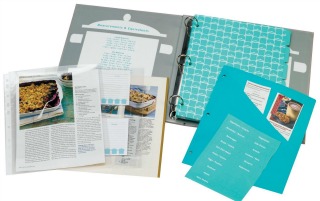 Create your own recipe binder kit
Create your own recipe binder kit
[Similar product available for purchase on Amazon.com]
Two of the simplest solutions for organizing recipes of this sort include creating file folders or a binder with different folders for a few broad categories of recipes (try not to have more than 5-7 categories, maximum).
Then, when you find something you want to try, such as in a magazine, or a recipe from a friend, just throw it into the right folder and you're done dealing with it. Don't make yourself create little cards for these items, or anything fancy and complicated like that, or I guarantee you'll begin to accumulate a pile again of loose recipes and torn out pages.
Then, when you get the urge to try a new breakfast recipe, for example, you just go to that file, choose one and cook. If you don't end up liking it, just throw that piece of paper away. If you do like it, however, then take the time to add it to your tried and true recipe organization system (discussed below), such as filling out a recipe card, adding it to the software program, or putting it in the appropriate binder.
Routines And Habits To Help You Make Time To Try The Recipes Or Eventually Throw Them Out
You don't want these recipes you've never even tried to start multiplying in your file cabinet or binders, and getting out of control. You should not be saving that many recipes you haven't yet tried. Be realistic - we've got the Internet now, so you don't have to save everything!
Therefore, make a habit of dating any recipes you place into your untried recipes organizational system. Then, make a rule for yourself that if you don't try it within X amount of time (one week, one month, one year, whatever works for you) that you'll throw it out, without guilt.
In addition, if you've got lots of recipes you want to try you've got to actually start making them! Make it a priority by planning on one new recipe per week, for example, when doing your meal planning (which we'll talk about in more detail in a later week of the Challenge). Over time this will thin your stack easily, without much effort on your part.
Step 4: Create A Storage And Organzing System For Your Tried And True Recipes
Most of the time you'll reference your tried and true recipes, not your untried recipes. Since the most important recipes to organize are the ones you use more frequently, you shoud spend more time and energy organzing recipes you know you like to use.
Once you really are sure you like a recipe, this is the time to put them into a uniform system to keep the recipes all together. This could utilize a recipe binder, recipe cards, or adding them to a software program, for example. Below, I discuss the types of organizing systems you can choose from in more detail.
You make the choice of what recipe organization system is right for you (all of them can work, depending on your personality and goals for the system). If you've previously started a system, and put a lot of effort into it, frankly I would suggest sticking with that one unless it really didn't work for you previously. The point is not to create a lot of busy work for yourself copying recipes onto pretty little cards, or typing into a software program for no good reason. The point is to access your recipes easily.
Ideas For How To Organize Recipes Into Categories
Whatever method you use to organize recipes, it is best to categorize them so you can find what you want, quickly and easily.
I've created a list of 18 suggested recipe categories you can use as is, or to help you think of what categories will work best for you (there's a free printable too if you choose to use my suggested categories and make a binder).
Once you've thought how to sort everything, I suggest making tabs in either a recipe binder or card box using these categories so it is easy to flip to what you're looking for.
Set Up Your Recipe Organizing System And Gradually Add To It
During this Organize Recipes Challenge choose what organizing system you'll use for your recipes, and set up the categories and gather your supplies. Then, if you have time start adding your recipes. However, don't get bogged down with this.
If you've really got 200 tried and true recipes be realistic about how long it will take to put them into your uniform system to keep them organized. I would suggest getting things set up this week, and then adding a couple new recipes to the system each week while doing your meal planning, so you don't feel overwhelmed trying to do it all at once.
What Cookbooks Deserve A Spot In Your Kitchen?
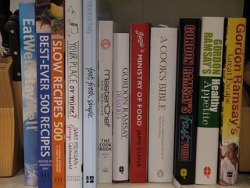 Photo courtesy of Yortw
Photo courtesy of Yortw
Some cookbooks deserve a spot in your kitchen, and some don't. The ones that do are the ones you use on a regular basis (typically at least weekly, if not more often).
However, kitchens, as I mentioned before, are actually not a great place for books and paper because of high heat, humidity and messy accidents.
Therefore, if you're a cookbook collector I suggest that you try to find space on some of your bookshelves outside the kitchen for the majority of your cookbooks, if they don't see much action.
It will make room in your kitchen for activities that must take place in there, and keep your books in better condition to boot.
Note: We're tackling book organization in general later in the Challenge.
I've also created a page of before and after pictures from readers who've done this challenged and organized their cookbooks.
Consider These Recipe Organization Solutions
Above, in step 4 I told you to create a storage and organizing system for your tried and true recipes, but I didn't give you much guidance on which system to choose. The reason is there are lots of systems you can choose from, and they can all work. Here is a brief run down of some of the major ones to consider, so you can choose the one right for you to use in the Organize Recipes Challenge.
Paper Or Electronic Recipe Organization?
 Use disposable sleeves for your iPad or similar
Use disposable sleeves for your iPad or similar
electronic device to keep them safe from splatters
and spills while cooking [Purchase on Amazon.com]
The first big consideration is whether you actually want to have paper recipes at all anymore. You can certainly switch everything into electronic format if that makes sense for you.
Certainly, having less paper to deal with can be a plus. However, inputting recipes into a computer can be tedious, and you've got to be able to access your computer (or iPad) while cooking for an electronic organizing system to be practical for you.
If you're concerned about spilling something on your electronics, perhaps paper is still a better choice for you. However, with paper you've got to consider spills and messes too. Therefore, I suggest using sheet protectors or something similar with whatever method you choose so spills don't ruin or make illegible any paper recipes you own.
In addition, having to unfile and file back recipes each time you cook can be a pain, if you use a paper system and aren't consistent about returning things to their proper place. Therefore, consider how you'll access the recipes in your organization system when deciding which to use, to make sure it fits your personality.
Recipe Storage Technology: Software And Apps
If you want to organize recipes electronically as part of the Organize Recipes Challenge there are many software applications and apps you can choose from.
First, if you find most of your recipes online, through blogs then you can simply add them to some Pinterest boards, like I mentioned above, to organize recipes. Further, you can view these recipes, with instructions and photos, directly on your iPad or Kindle Fire, for example, while cooking, without ever printing the recipe out.
Some popular software programs, or Internet based programs many people use include:
- Plan To Eat: An online meal planner resource you can use to handle all the portions of planning your meals, from recipe organization, creating your grocery shopping list, and, of course, planning your menu for the week. You can read my (Taylor's) Plan To Eat review here. You can sign up for a 14 day free trial of Plan To Eat here.
- Evernote - (has a free and premium version) - Evernote is an Internet based program that works on both Windows and Macs, and has apps for many types of smart phones, which is designed for notetaking and archiving. Many people use it to organize recipes (here's reviews of this app here on the site, including explanations from readers of how they organize recipes using it).
In addition, there are lots of other apps you can use to organize recipes too, and often, but not always, these apps also can be used for meal planning and making a grocery list.
Apps also have an advantage over older electronic means for organizing recipes, since they're portable and accessible, such as when you're at the grocery store.
You can check my recommendations, as well as lots of reviews from other readers, in the HSS101 App Store, which has a whole section for grocery, recipe and meal planning apps. In addition, I'd love it if you shared your own reviews of these apps as well, since new ones are coming out all the time.
Recipe Binders
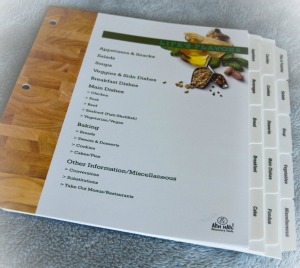 Pre-printed category tabs for recipe binder
Pre-printed category tabs for recipe binder
[Available on Amazon.com]
If you like to pull out lots of recipes from several types of sources, and want to stick with paper, a recipe binder is most likely the best method for you to organize recipes.
You can purchase a recipe binder with premade categories (such as the one below), or make your own easily with a simple three ring binder, sheet protectors and some divider tabs (also below). Organize the binder into several categories (remember you can use my suggested categories above if you want) and add the recipes into the sheet protectors.
If you've got irregularly sized recipes just staple or tape the recipe to a normal sized sheet of paper to make it easier to add to the sheet protectors.
Recipe Cards
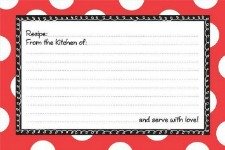 Blank recipe cards
Blank recipe cards
[Purchase similar product on Amazon]
The most traditional way to organize recipes is with recipe cards.
This is actually my least favorite method, because I think it takes the most work since you've got to either handwrite or type each recipe onto the standard sized card (4x6 or 3x5 are the most common sizes), and that takes a lot of time. Some people love them though, and they're still quite popular.
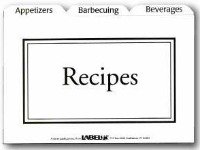 Pre-printed recipe card dividers
Pre-printed recipe card dividers
[Purchase on Amazon]
Once you've got the cards created you can place them in a recipe box, holder, or even in a binder. The boxes and holders are similar to index card holders, and you file the cards behind each of the major categories. If you choose a binder, they typically have special plastic sleeves designed to hold the cards and allow you to flip to the one you're interested in.
Listen To Taylor's Video Tips For This Week's Organized Home Challenge & Declutter 365 Missions
Do you want more in-depth tips and instructions for how to do this week's missions and challenge all about your recipes and cookbooks? If so, I've got recorded video tips from me, Taylor, from the video archives in the Declutter 365 Premium group, all about this week's challenge and missions.
These video tips are available on demand in the archives, once you're a member of the group.
In Week #5's video I discussed the following topics, among others:
- What to do when others try to foist their clutter upon you
- Planning ahead for a more organized life
- One goal to strive for with your routines --> to achieve more rest in your daily life
- Recipes and cookbook decluttering and organizing tips
- Declutter 365 missions for week
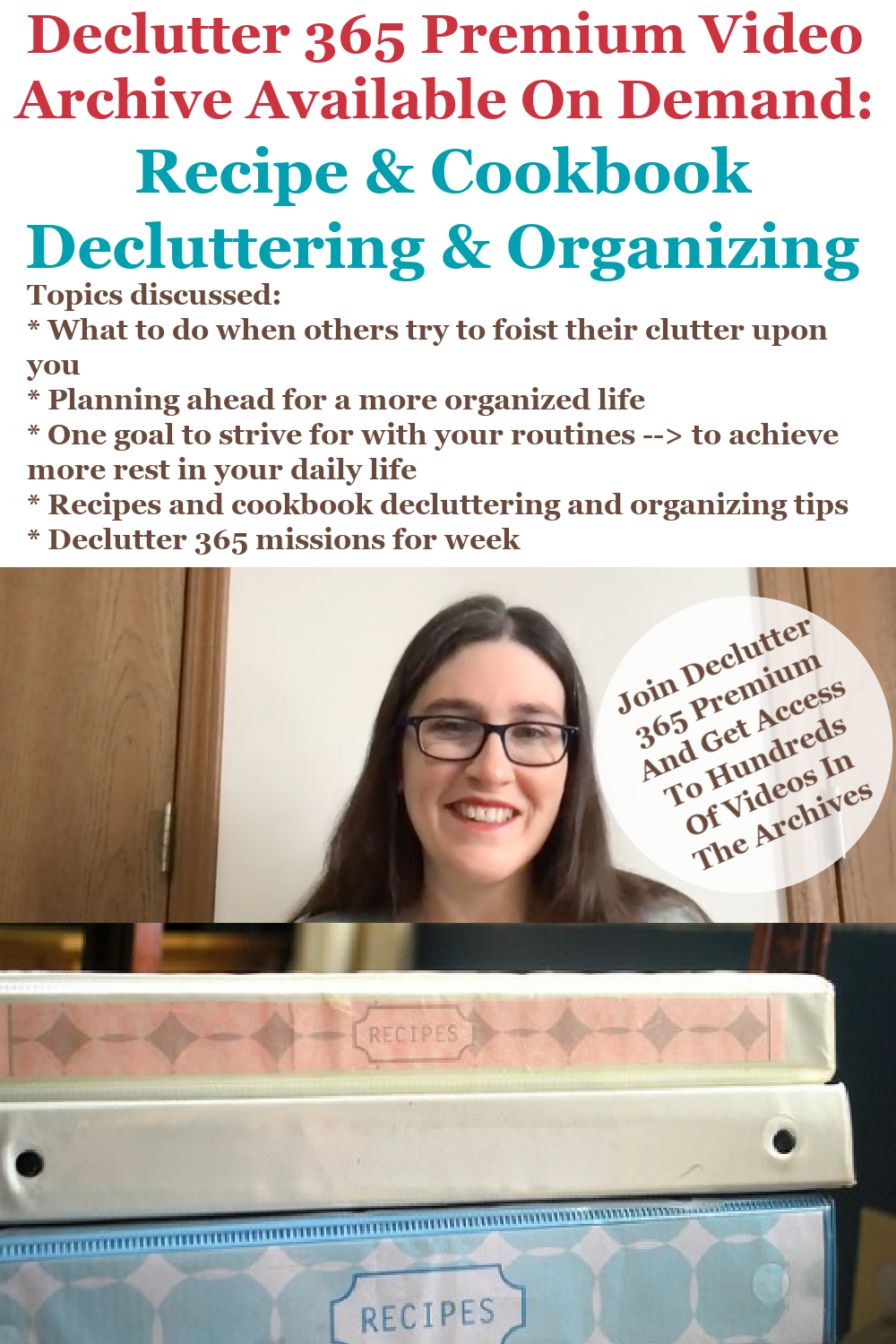
I suggest watching the video archive for the week, perhaps while you're doing some decluttering or cleaning around your home, before starting the week's missions and Challenge, and then you'll be able to breeze through this week's worth of decluttering missions, as well as organize what's necessary for the 52 Week Organized Home Challenge, based on the advice and instructions within those videos.
It really is like having me, Taylor, available, 24-7, as your decluttering and organizing coach, for every area of your home!
Plus, once you're a member of Declutter 365 Premium you get access to not only this video, but all the videos for the 52 weeks of the year, for 5 years (that's over 260 videos available in the archives!)

Get This Paper & Filing Decluttering Checklist + 32 Other Decluttering Checklists For Your Home
Right now you're decluttering your papers and files, and there's a lot of types and varieties of these around your home.
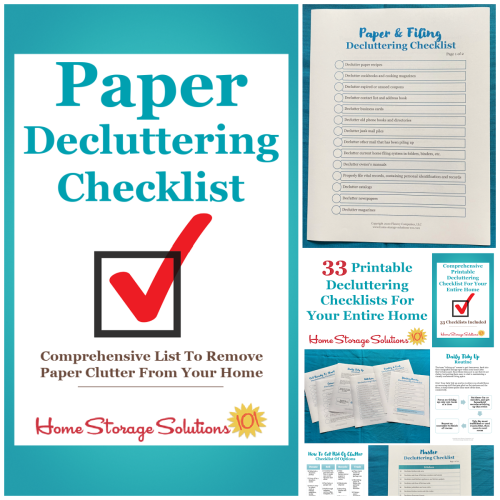
I've done the hard work of breaking down these tasks into smaller more manageable steps for you, so you don't get overwhelmed or worry you're forgetting a task, and you can go at the pace you want, whether that's fast or slow.
In addition, you can tackle these decluttering tasks in whatever order you want when you use these checklists!

Tell Me How The Organize Recipes And Cookbooks Challenge Is Going For You
I would love to know how this week's Challenge is going. You can tell me your progress or give me more ideas for how you've organized this area of your home below in the comments.
I also love before and after pictures of recipe organization solutions, and would love to see some of yours. Submit your pictures (up to four per submission) and get featured in the Home Organization Hall of Fame. You've worked hard to get organized, so now here's your chance to show off!
Several people have already taken this challenge, and shared their results with me, and I've compiled them into the hall of fame post below. Each of them have used slightly different organizational methods, and have shared some great photos that can get you inspired, so be sure to check them out.
- Hall Of Fame {Part 1} {paper systems for recipe organization}
- Hall of Fame {Part 2} {cookbooks}
- Hall of Fame {Part 3} {digital and electronic organization}
Sneak Peek For Next Week's Challenge
We're working on our homes slowly, one area at a time, so don't get too distracted from the Organize Recipes and Cookbooks Challenge this week. However, I know people like to plan for what's next, so I'll give you a little sneak peek.
Next week we'll focus on recycling and trash areas throughout the house, but concentrating on the kitchen especially, since a lot of trash and waste is generated in this room each day. This will continue the focus we've had for the last several weeks on organizing various aspects of the kitchen, which we'll continue to focus on for several more weeks to come.
Make Sure You Make The Most Of These 52 Organizing Challenges
Get your copy of the printable one page 52 Week Organized Home Challenge schedule for the year here, so you can see all the challenges we're working on.

Further, if you'd like to join a community of others who are all commmitted to these organizing challenges and corresponding decluttering missions, and want more interaction with me, Taylor, video archives of Taylor providing more tips for each of these challenges and missions, as well as live monthly group coaching sessions focusing on the skills and habits necessary to maintain your home from now on, I'd urge you to join the private and exclusive Declutter 365 Premium Facebook group (you can learn more about it at the link).

In addition, have you gotten your Declutter 365 Products yet, to make sure you can get even more assistance with decluttering and organizing your home this year? There are both free products (like the Declutter 365 calendar, a $20 value), as well as add-ons, such as daily text messages, planner stickers, and a Premium Facebook group, as well as a pack of printabe decluttering checklists.
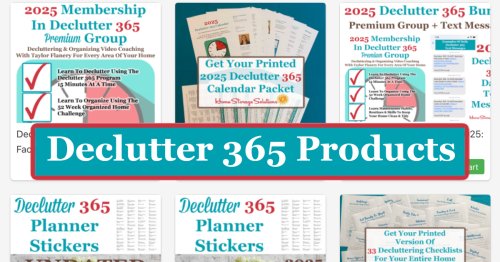
Cook Great Meals In Less Time With An Instant Pot: Free Course To Learn How
Do you have an Instant Pot hiding in your cabinet? Want to learn how to use it? Sign up for Instant Pot School! It's free, and it will help you put that time-saver to work!
Learn more about this free course, and why I'm recommending it in my article all about Instant Pot School.

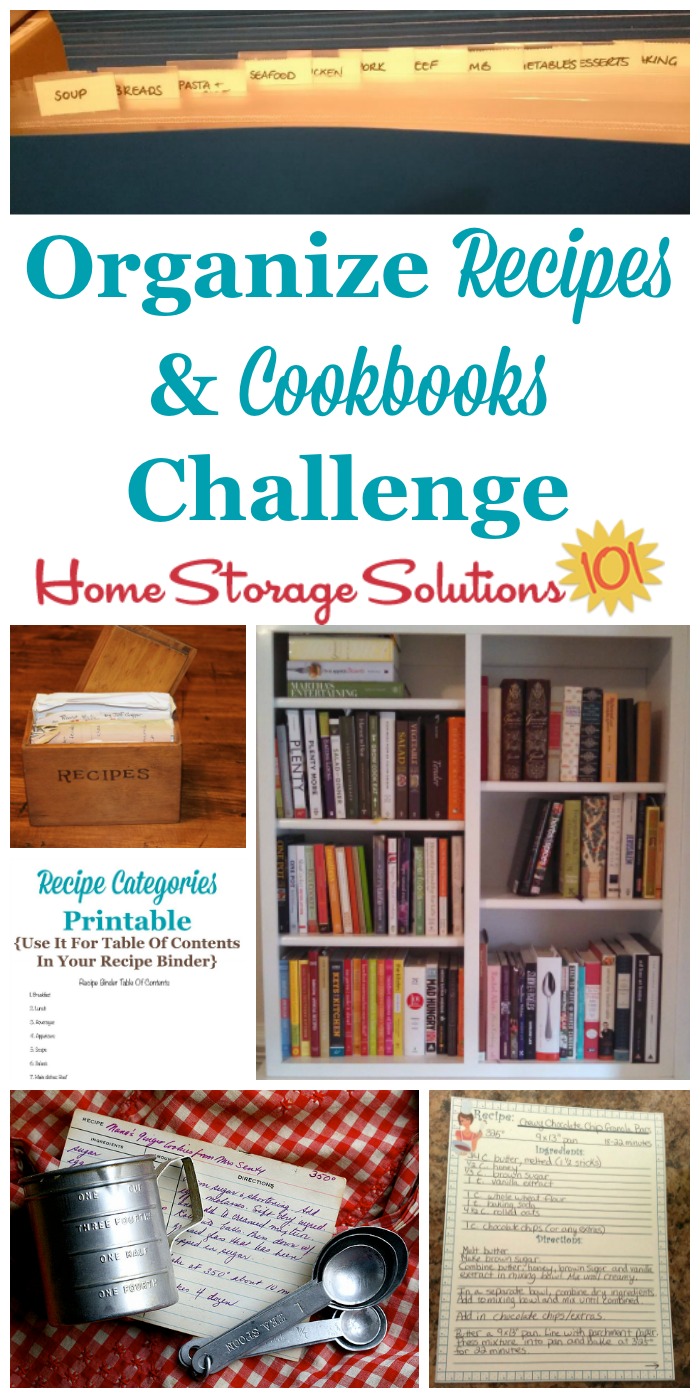
Top photo courtesy of a reader, LeAnne, and bottom left collage photo courtesy of liz west
Some links on this page are affiliate links, meaning that if you purchase a product through them I receive a small commission which helps me provide this information to you for free, plus support my family. My integrity and your satisfaction are very important to me so I only recommend products I would purchase myself, and that I believe would benefit you. To learn more please see my disclosure statement.
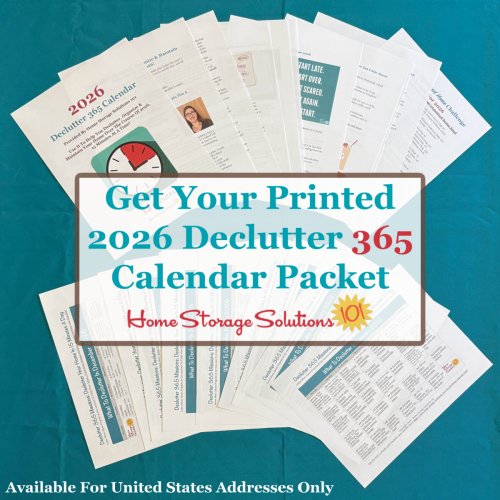
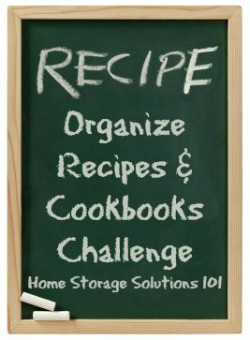

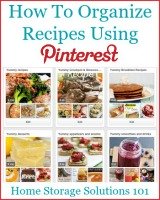
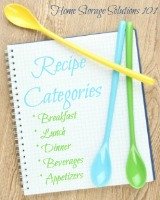
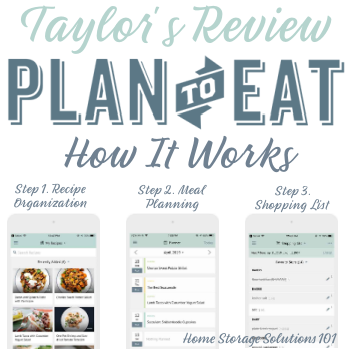

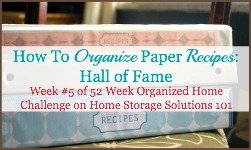

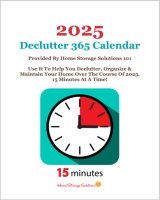

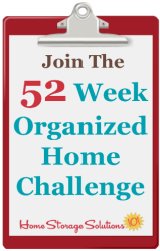



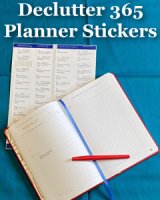





Share Your Comments, Tips & Ideas
I would love to hear from you, sharing your thoughts, questions, or ideas about this topic, so leave me a comment below. I try to always respond back!